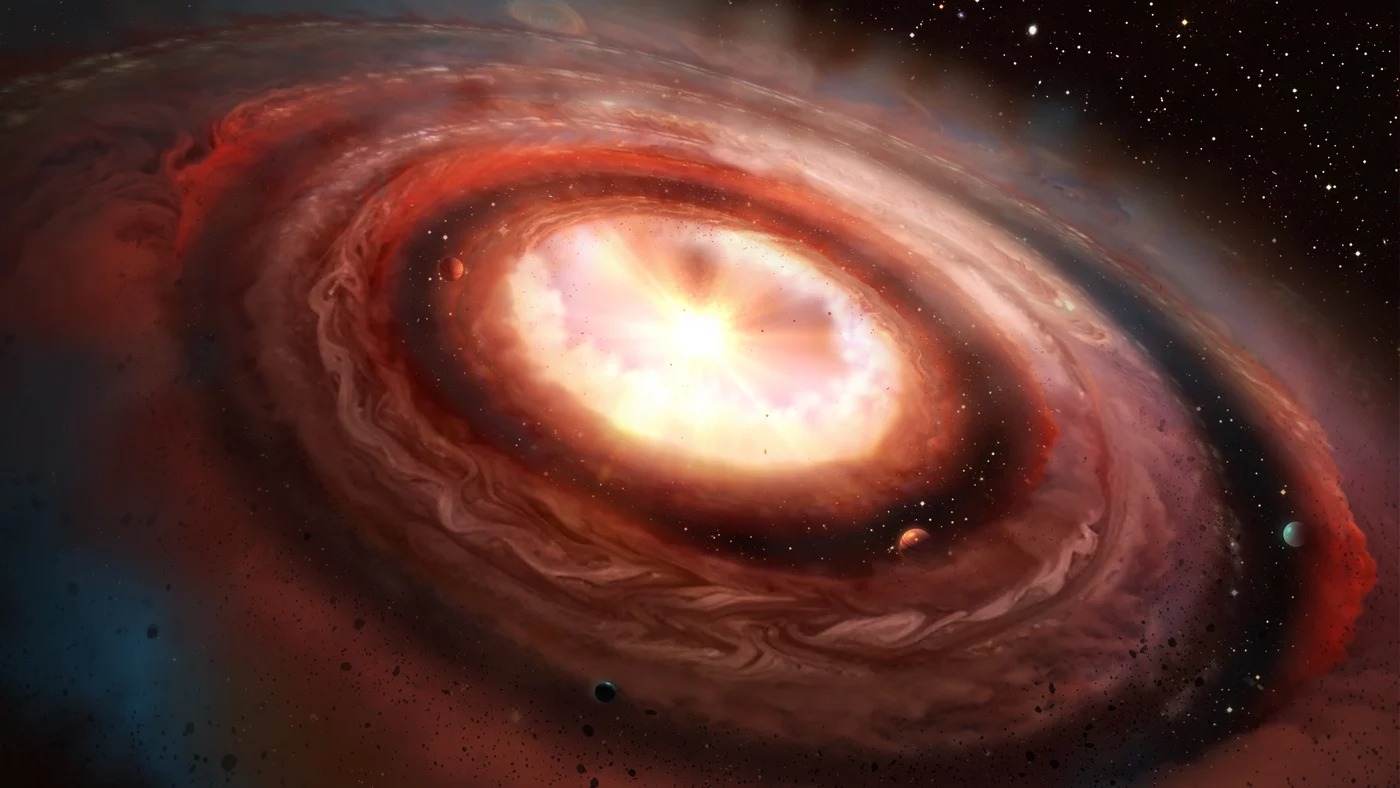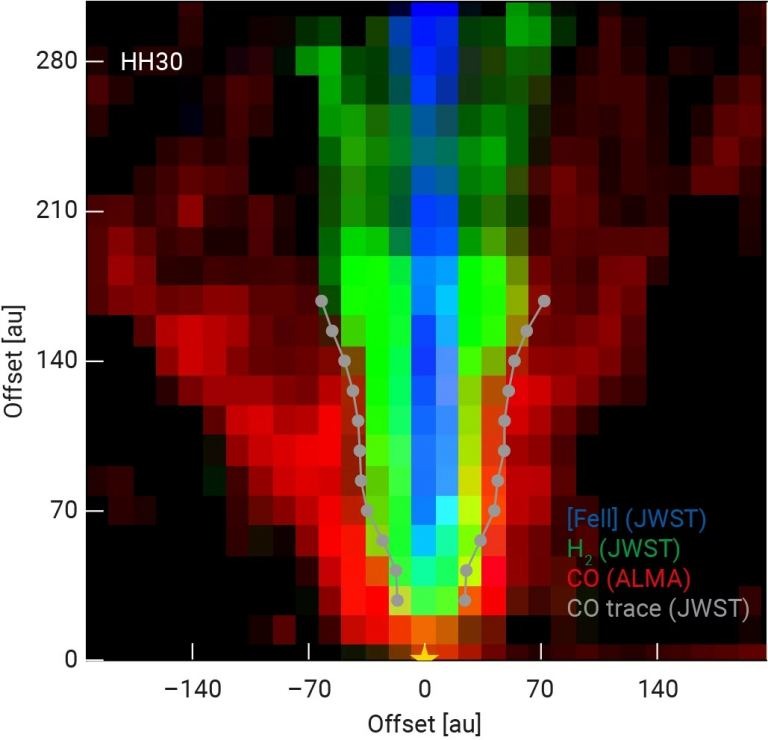The Universe is filled with countless stars. More than 3,000 new stars are born every second when clouds of dust and gas undergo gravitational collapse. Subsequently, the remaining dust and gas settle into a swirling disk that feeds the star’s growth and eventually accretes to form planets – better known as a protoplanetary disk. Although this model, known as the Nebular Hypothesis, is the most widely accepted theory, the exact processes that give birth to stars and planetary systems are not fully understood yet. Shedding light on these processes is one of the many goals of the James Webb Space Telescope (JWST).

An international team of astronomers used James Webb infrared optics to study protoplanetary disks around young stars. The observations supported the hypothesis that magnetic winds may be an important mechanism that contributes to star formation, helping gas to lose angular momentum and hit the star.
The study was led by Ilaria Pascucci of the University of Arizona, and the results were published in the journal Nature Astronomy. Scientists studied four protoplanetary systems and were able to trace the movement of gas in the disks, revealing a complex three-dimensional structure of winds emanating from the protoplanetary disk. These winds were remarked to have a layered structure with a central jet embedded in a cone-shaped shell. This allowed astronomers to conclude that magnetic winds may play a key role in transporting gas to a star.

In addition to magnetic winds, the researchers also looked at other types of winds, such as X-winds and thermal winds caused by starlight. Observations with James Webb helped distinguish between these types of winds and reveal their interaction with the protoplanetary disk. Magnetic winds have been found to cover wider regions than X-winds and extend much farther from the star.
Astronomers previously had evidence for the existence of such winds, but only the latest JWST technology has made it possible to study them in detail. The team plans to extend the study to more protoplanetary disks in the future to understand how widespread these structures are and how they evolve along with the formation of stars and planets.

Pascucci said the findings were an important step in addressing the question of how stars accreted matter, and planned to continue the research with the James Webb Telescope for more detailed analysis.
We previously reported on how an astronomer accidentally discovered the largest protoplanetary disk.
According to universetoday.com


